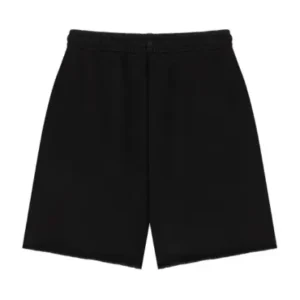A 3-phase solar inverter is essential for converting direct current (DC) from solar panels into alternating current (AC) and is suitable for three-phase electrical systems. These 3 Phase Solar Inverter is particularly effective for large-scale installations where balanced power distribution is crucial. They ensure that energy produced by solar panels is efficiently utilized, reducing energy waste and improving overall system performance. Their robust design and high capacity make them ideal for commercial and industrial applications, providing a reliable and efficient energy solution.
Why a 3 Phase Inverter Is Perfect for Commercial Projects
A hybrid inverter allows commercial setups to combine solar panels, battery storage, and grid power into one efficient system. This integration optimizes energy use and ensures smooth transitions between sources without disruption.
Reliable Backup During Outages
In the event of a power failure, the inverter instantly switches to stored battery energy. This ensures business continuity, preventing downtime that could impact operations and productivity.
High Capacity for Large Demands
Built for heavy-duty applications, these inverters can manage substantial energy loads typical of commercial buildings. Their capacity supports multiple systems running simultaneously without strain.
Efficient Three-Phase Distribution
The 3 Phase Inverter balances power across three phases, reducing voltage drops and increasing efficiency. This balanced supply is crucial for machinery and equipment that require stable and consistent power.
Lower Operating Costs
Businesses benefit from significantly reduced electricity bills by maximizing solar use and minimizing grid dependence. Over time, the savings contribute to a strong return on investment.
How a Three-Phase Solar Inverter Maximizes Energy Efficiency
A three-phase solar inverter significantly enhances energy efficiency by optimizing the conversion process from direct (DC) to alternating (AC). Distributing power evenly across all three phases reduces the likelihood of power imbalances and energy loss, which are common in single-phase systems. This efficient distribution ensures that the maximum amount of generated solar power is utilized rather than wasted.
Furthermore, these inverters have advanced monitoring and management systems that continuously track energy production and consumption. This real-time data allows the system to be fine-tuned to operate efficiently, adjusting for weather conditions and energy demand fluctuations.
The advanced technology used in three-phase solar inverters also minimizes heat generation during conversion, thereby reducing energy loss due to thermal inefficiency. Additionally, the robust design of these inverters ensures long-term reliability, which is crucial for maintaining consistent energy efficiency over the lifespan of the solar installation.
By integrating these features, a three-phase solar inverter maximizes the energy output from solar panels, ensuring that the entire system operates with the highest possible efficiency. This makes it an indispensable component in large-scale solar installations.
Optimizing Power Distribution with a 3-Phase Inverter
Optimizing power distribution with a 3-phase inverter ensures that energy is efficiently managed across all phases, minimizing potential imbalances and enhancing system performance. By evenly distributing the electrical load, these inverters help maintain a stable and consistent power supply, particularly important for industrial and commercial applications where demand can vary significantly throughout the day.
One key benefit is the reduction in energy wastage. In single-phase systems, imbalances often lead to inefficiencies, but a three-phase inverter can mitigate these issues by balancing the load, thus reducing the strain on individual components and prolonging their lifespan. This effective load management also minimizes the risk of overheating and potential damage to the system.
Additionally, these inverters have advanced control mechanisms that dynamically adjust the power distribution based on real-time demand and supply conditions. This ensures optimal performance and reliability, even in fluctuating conditions. The capability to integrate seamlessly with other energy sources, such as battery storage and the grid, further enhances the system’s adaptability and efficiency.
In summary, a three-phase inverter is instrumental in achieving optimal power distribution, making it an essential component for any large-scale solar installation that aims to maximize efficiency and reliability.
Advantages of Using a 3 Phase Hybrid Inverter in Solar Systems
A 3-phase hybrid inverter intelligently switches between solar panels, battery storage, and grid power, maintaining a consistent energy supply despite fluctuations in generation or grid stability.
Efficient Energy Storage and Discharge
Its high-capacity design effectively stores excess solar power and smoothly discharges it when needed, ensuring energy availability during peak usage or nighttime.
Robust and Reliable Design
Engineered for demanding applications, these inverters feature durable construction and advanced control systems that ensure reliable performance over extended periods.
Intelligent Load Management
The inverter minimizes overloads and protects connected systems by evenly distributing energy across phases. This reduces wear on components and extends the overall system life.
Ideal for Large-Scale Systems
With their ability to manage substantial loads and complex energy demands, 3 Phase Hybrid Inverter is perfect for commercial and industrial-scale solar installations.
Choosing the Right Three-Phase Solar Inverter for Your Needs
Choosing the right three-phase solar inverter demands a comprehensive evaluation encompassing several vital elements. At the forefront of this selection process lies the installation’s scale, as expansive ventures generally necessitate inverters boasting greater power handling capacities and resilient construction to manage substantial energy generation. A meticulous assessment of energy demands is crucial, guaranteeing the chosen inverter can effectively manage peak consumption periods without sacrificing operational efficiency. Seamless integration with pre-existing infrastructure, encompassing battery storage solutions and grid connection interfaces, represents another pivotal consideration for streamlined system functionality.
Moreover, scrutinizing efficiency ratings is paramount, given that higher efficiency directly correlates with enhanced energy utilization and a subsequent decrease in long-term operational expenditures. Delving into specific technical specifications, such as the sophistication of maximum power point tracking (MPPT) functionalities and the availability of real-time performance monitoring, is highly recommended, as these features can substantially optimize the overall system output and provide valuable insights into its operation.
Furthermore, thoroughly examining the inverter’s warranty provisions and the quality of after-sales support services is indispensable for ensuring sustained reliability and facilitating any necessary maintenance or repairs over the system’s lifespan. To gain further clarity and make an informed decision, seeking guidance from seasoned industry professionals and analyzing real-world case studies of comparable installations can offer invaluable perspectives on the most suitable options. Ultimately, by diligently weighing these multifaceted factors, one can confidently select a three-phase solar inverter that harmoniously aligns with the intended solar energy project’s unique requirements and overarching objectives.
Cost Efficiency of a 3-Phase Inverter in Large-Scale Installations
The cost efficiency of a 3-phase inverter is particularly evident in large-scale installations, where optimized power distribution and enhanced energy management can significantly reduce operational expenses. These inverters manage high-energy loads more efficiently than single-phase systems, which often struggle with imbalances and inefficiencies. Ensuring a more even power distribution minimizes energy wastage and reduces the strain on system components, leading to fewer repairs and replacements over time.
Furthermore, these inverters’ advanced monitoring and control features allow for precise energy management, enabling real-time adjustments to maximize efficiency. This technological edge results in lower energy consumption and operational costs, making them a financially prudent choice for extensive installations. Additionally, their robust design and long lifespan mean that the initial higher investment is offset by the reduced need for maintenance and the extended durability of the system.
In large-scale applications, where energy demands are substantial and continuous, a three-phase inverter’s ability to handle these requirements efficiently contributes to significant cost savings. This makes them essential to achieving economic and operational efficiency in extensive solar power projects.
How a 3-Phase Hybrid Inverter Enhances System Flexibility
A hybrid inverter significantly boosts system flexibility by seamlessly integrating various energy sources, including solar panels, battery storage, and the grid. This integration allows for a continuous energy supply, even if one source becomes unavailable, ensuring stability and reliability. The inverter’s ability to adapt to changing energy demands makes it ideal for current and future energy requirements. Its dynamic control mechanisms enable real-time adjustments, optimizing energy use and distribution according to demand fluctuations. This flexibility is particularly beneficial in environments with unpredictable energy consumption patterns, allowing for more efficient use of resources.
Additionally, the capability to manage both energy input from renewable sources and storage solutions enhances overall system efficiency. This not only improves the performance of the solar installation but also reduces reliance on grid energy, leading to potential cost savings. These inverters’ robust design and advanced technology support their application in large-scale projects, providing a scalable solution that can grow with increasing energy needs. By offering such adaptability, a 3-phase hybrid inverter becomes essential for modern solar power systems aiming to maximize efficiency and sustainability.
The Role of a Three Phase Solar Inverter in Sustainable Energy Solutions
A three-phase solar inverter is pivotal in advancing sustainable energy solutions by significantly improving the performance and reliability of solar power systems. Its integration capabilities allow it to work seamlessly with multiple energy sources and storage solutions, thus contributing to a robust and adaptable energy infrastructure. This adaptability ensures that renewable energy can be efficiently harnessed and utilized, minimizing reliance on non-renewable resources. The Three Phase Solar Inverter advanced monitoring and control features enable precise energy management, optimizing the use of solar power and reducing wastage.
This enhances the system’s overall efficiency and supports the transition towards cleaner energy sources. By facilitating large-scale renewable energy projects, three-phase solar inverters help to lower carbon emissions and promote a sustainable future. Their ability to maintain a consistent energy supply despite fluctuations in solar generation or grid availability further underscores their importance in creating resilient and sustainable energy networks. In summary, incorporating a three-phase solar inverter is instrumental in driving the adoption of renewable energy technologies and fostering environmental sustainability.
Conclusion
In conclusion, the 3 phase solar inverter is a cornerstone for large-scale solar installations. Its ability to efficiently convert and distribute power across three phases ensures optimal energy utilization, minimizes waste, and enhances system reliability. Integrating hybrid functionalities further amplifies these benefits, offering seamless energy management through battery storage and grid connectivity. By providing stable power, reducing operational costs, and maximizing renewable energy, the 3 phase solar inverter is not just a component but a key enabler for a sustainable and economically viable energy future for commercial and industrial applications.
FAQs
What makes a 3 Phase Solar Inverter suitable for large installations?
A 3 Phase Solar Inverter is ideal for large installations due to its ability to handle high power loads, efficiently distribute energy across three phases for balanced power, and minimize energy loss. This ensures optimal performance and reliability for commercial and industrial applications.
How does a 3-phase hybrid inverter provide backup power?
A 3-phase hybrid inverter integrates battery storage, allowing it to seamlessly switch to stored energy during power outages. This ensures a continuous power supply, preventing downtime and maintaining operational continuity for critical systems in commercial settings.
What are the cost benefits of using a 3-phase inverter?
Using a 3 phase inverter in large-scale installations leads to cost savings through optimized energy distribution, reduced energy waste, lower electricity bills by maximizing solar energy use, and decreased maintenance due to the balanced load on system components.
How does a 3-phase inverter enhance energy efficiency?
A three-phase solar inverter maximizes energy efficiency by evenly distributing power, reducing power imbalances and losses common in single-phase systems. Advanced monitoring and control systems further optimize energy production and consumption in real-time.
In what way does a 3-phase hybrid inverter increase system flexibility?
A three-phase hybrid inverter enhances system flexibility by integrating solar panels, battery storage, and the grid, allowing seamless switching between energy sources. This adaptability ensures a consistent power supply and optimizes energy use based on availability and demand.
| Related Business Listings |
| Contact Directory |
| Local Business Profiles |








